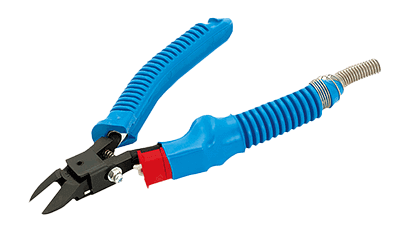What Are Heat Nippers?

Heat nippers, equipped with built-in heaters, are specialized tools designed for precision cutting tasks, particularly when processing materials like plastics. By heating the material before cutting, these tools soften the target, allowing for cleaner, more precise cuts. This feature is particularly beneficial in industries requiring meticulous detail, such as electronics and plastic part manufacturing. Despite their utility, caution is advised during operation due to the high temperatures involved; protective measures, such as wearing heat-resistant gloves, are recommended.
Applications of Heat Nippers
Heat nippers find utility across various fields, facilitating tasks that demand high precision:
- Plastics Processing: Utilized in shaping and cutting plastic components, heat nippers are indispensable in fabricating automotive interiors and consumer goods.
- Plastic Model Assembly: Essential for the assembly and customization of model kits, where they enable the precise cutting of small, intricate parts.
- Jewelry Making: Employed in crafting and repairing fine jewelry, offering the precision needed for working with delicate gemstones and metals.
- Optical Products: Applied in the lens manufacturing process, particularly for removing excess material known as gates, thus enhancing the quality of the final product.
Principles of Heat Nippers
Heat nippers operate on a simple yet effective principle of applying heat to facilitate cutting. Comprising a heater to warm up the material, a metal blade for cutting, and a handle for operation, these tools ensure a seamless cutting experience. The heater raises the material’s temperature to optimal levels for cutting, while the blade, designed according to the specific application, ensures a neat finish. The handle enhances user control and precision during the cutting process.
Choosing Heat Nippers
Selecting the right heat nipper involves considering several factors:
- Cutting Ability: Assess the maximum material thickness the tool can handle and ensure the blade width is adequate for the intended application.
- Power Supply: Verify compatibility with the available power supply, and consider models with included transformers for output adjustment if necessary.
- Dimensions: Choose a model that fits well within the intended workspace, considering the ease of use in confined spaces and the length of the power cable.